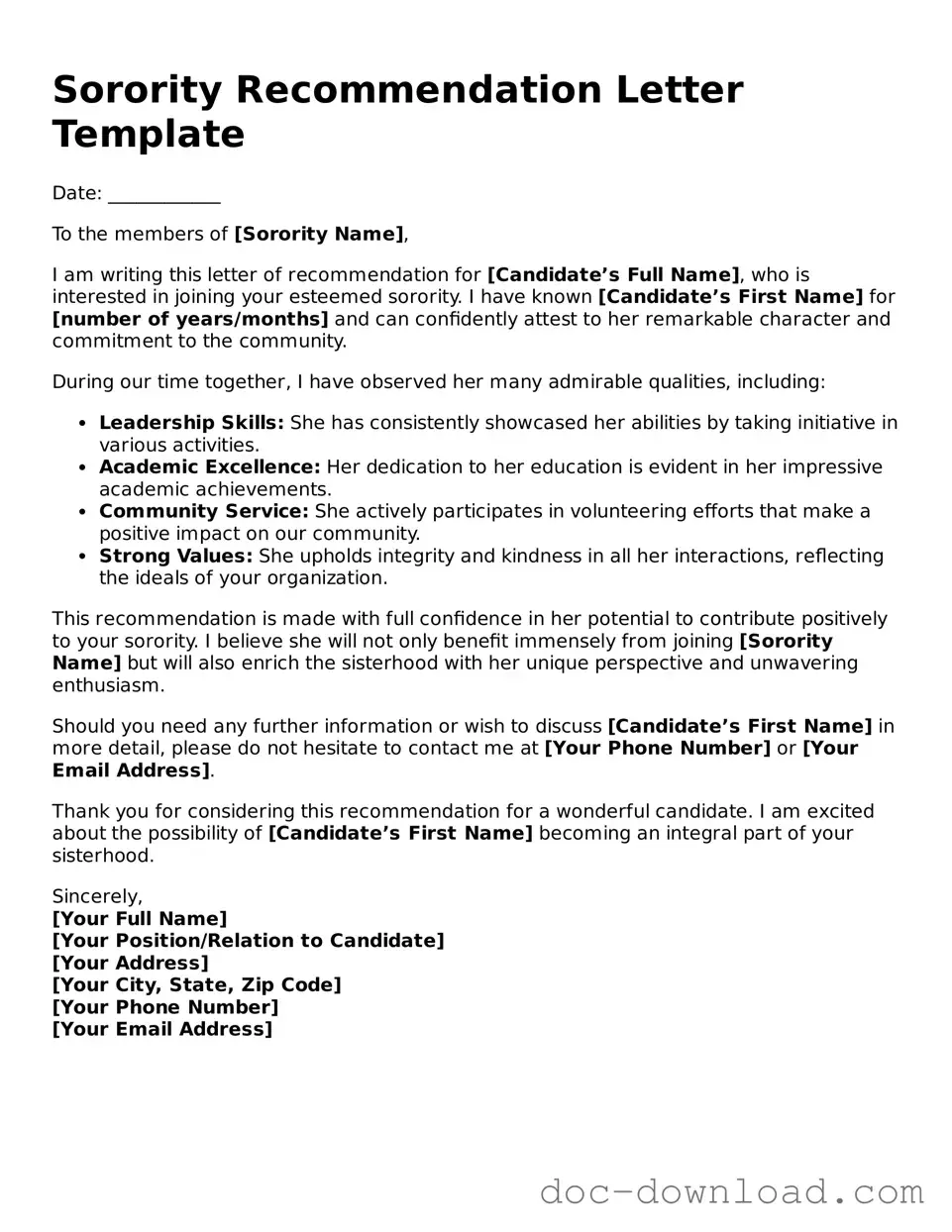The Sorority Recommendation Letter form shares similarities with the College Application Recommendation Letter. Both documents serve as endorsements of an individual's character and qualifications. They provide insights into the applicant's personality, achievements, and potential contributions to the respective community. In both cases, the recommender must present a clear and positive portrayal of the individual, highlighting specific examples that showcase their strengths and suitability for membership or admission.
Another document akin to the Sorority Recommendation Letter is the Job Reference Letter. This letter is often requested by job applicants to support their qualifications for a position. Like the sorority recommendation, it emphasizes the candidate's skills, work ethic, and personal attributes. Employers rely on these letters to gain a deeper understanding of the applicant's past performance and how they might fit into the company culture.
The Personal Reference Letter also resembles the Sorority Recommendation Letter in its purpose of vouching for an individual's character. This document is typically used in various situations, such as applying for a rental property or volunteering. Both letters require the writer to articulate their relationship with the individual and provide specific examples of positive traits, thereby establishing credibility and trustworthiness.
The Graduate School Recommendation Letter is another document that parallels the Sorority Recommendation Letter. This letter is crucial for students seeking advanced degrees. It must detail the candidate's academic abilities, research potential, and overall readiness for graduate-level work. Just as in sorority recommendations, the writer must convey a genuine endorsement, often backed by personal anecdotes or observations.
Understanding the nuances of different recommendation letters can significantly benefit candidates seeking to make a lasting impression. For instance, drawing insights from a PDF Templates Online can provide guidance on drafting effective letters that align with the expectations of various contexts, whether it be for job applications, college admissions, or personal endorsements.
The Character Reference Letter is similar in that it highlights an individual's moral and ethical standing. Often used in legal or personal matters, this document seeks to portray the person as trustworthy and reliable. Both the character reference and sorority recommendation require the writer to provide specific examples that demonstrate the individual's positive traits and contributions to their community.
The Volunteer Reference Letter shares common ground with the Sorority Recommendation Letter. When individuals apply for volunteer positions, they often need references that speak to their commitment and ability to contribute. Both letters emphasize the individual's dedication, teamwork, and impact within their respective environments. The recommender's insights help organizations assess the candidate's fit for volunteer roles.
Lastly, the Scholarship Recommendation Letter is akin to the Sorority Recommendation Letter in its role of supporting an individual's application for financial aid. This document highlights the applicant's academic achievements, community involvement, and personal qualities. Both letters aim to persuade the reviewing committee of the candidate's merit and potential, often drawing on specific experiences and accomplishments to strengthen the case.
